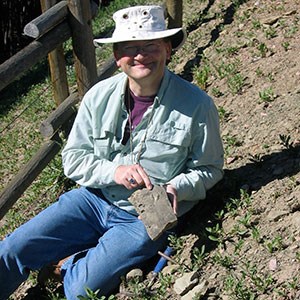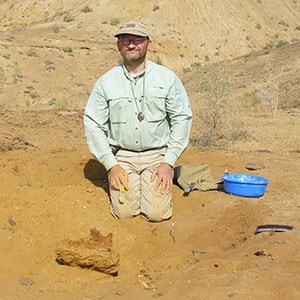Part of a series of articles titled Meet A Paleontologist.
Article
Hans Deitre-Sues, National Museum of Natural History of the Smithsonian Institution

Curator of Vertebrate Paleontology, National Museum of Natural History of the Smithsonian Institution
What is your job, and what do you study?
I am Curator of Vertebrate Paleontology at the National Museum of Natural History of the Smithsonian Institution. I study dinosaurs and other reptiles from the Age of the Dinosaurs.
What are you working on now?
I am now working on an exhibit on the life and times of the dinosaur Triceratops, which will open at the National Museum of Natural History in late 2014 or early 2015.

Where did you go to school? What were some of your favorite classes that you took?
What were some of your favorite classes that you took? I received my academic education at the University of Alberta and Harvard University. My favorite classes were in paleontology and vertebrate biology.
Was there an experience you had that made you realize you wanted to be a paleontologist?
My parents gave me a book on prehistoric life when I was four years old. The strange, long-extinct creatures pictured in that book enthralled me and I knew that I wanted to spend my life finding out more about them.
What is your most memorable experience working with fossils?
Discovering new kinds of extinct animals is thrilling. To be the first person seeing the fossils of a new creature is unlike anything one can experience.
Do you have any advice for aspiring paleontologists?
Make sure that you get a good education in the earth and life sciences and always maintain your enthusiasm.
Last updated: July 26, 2018
